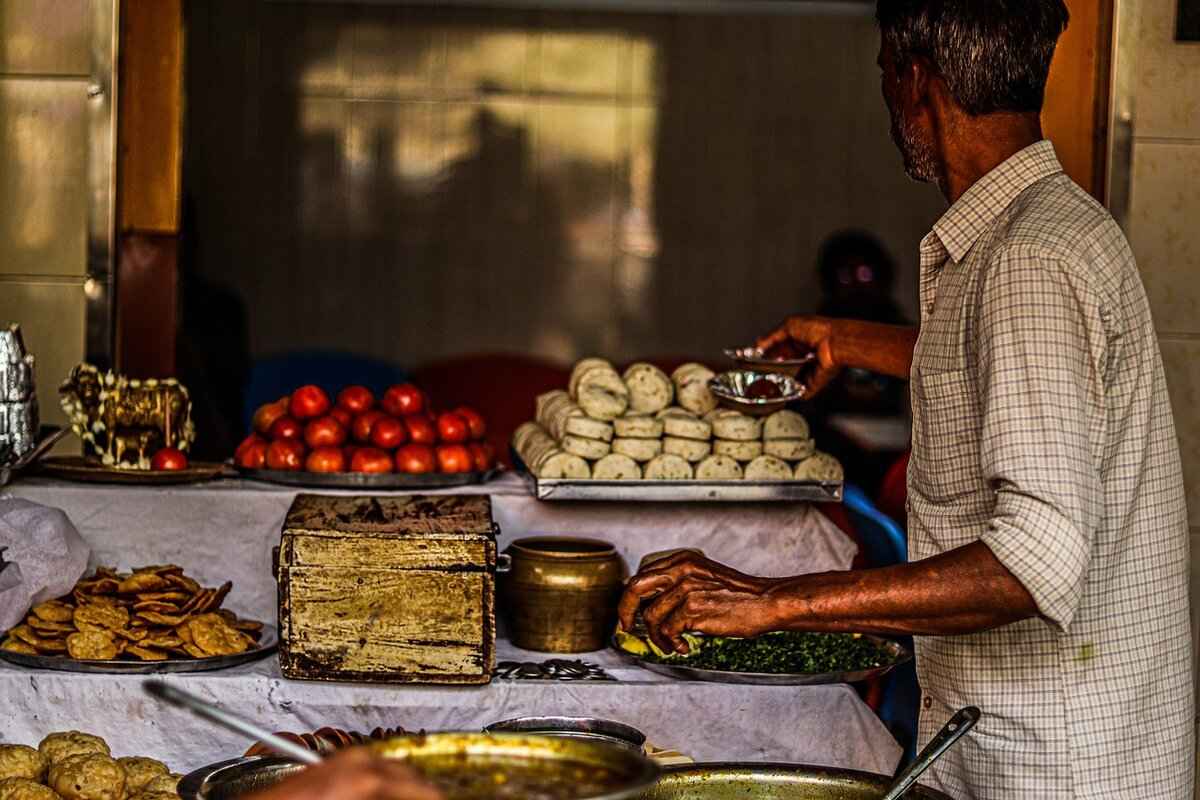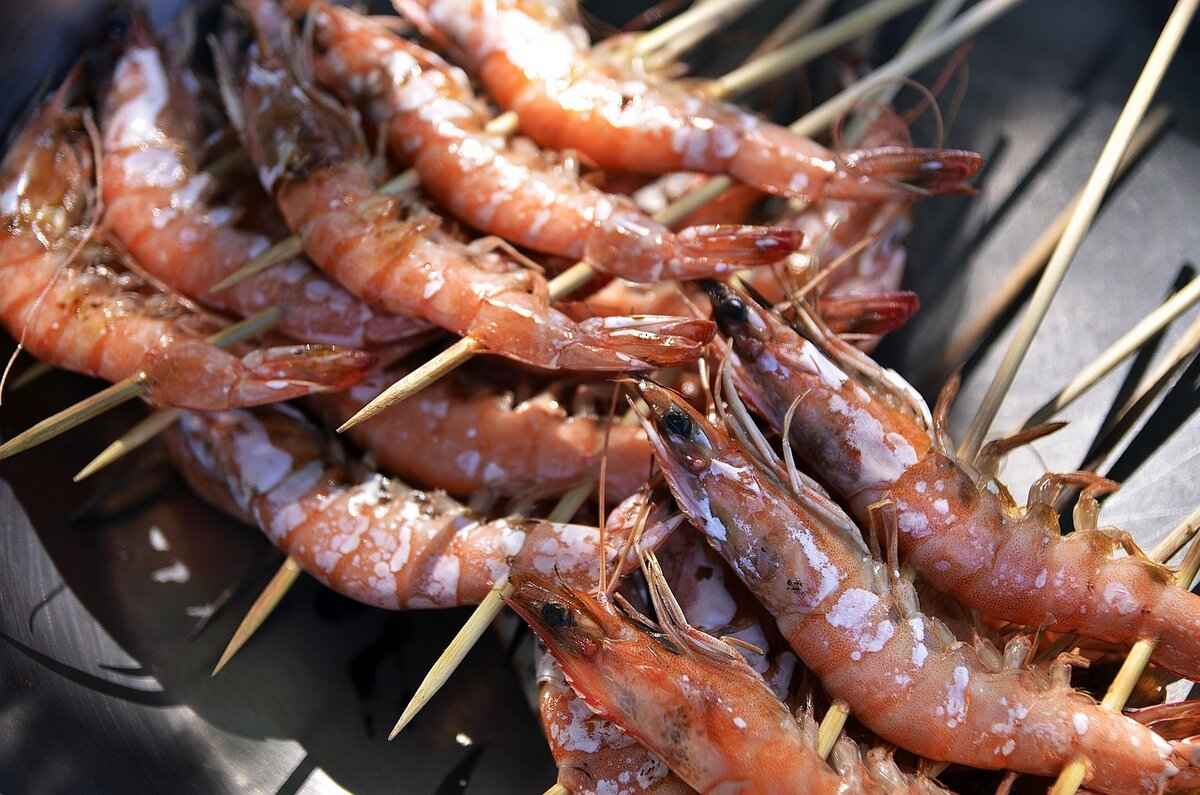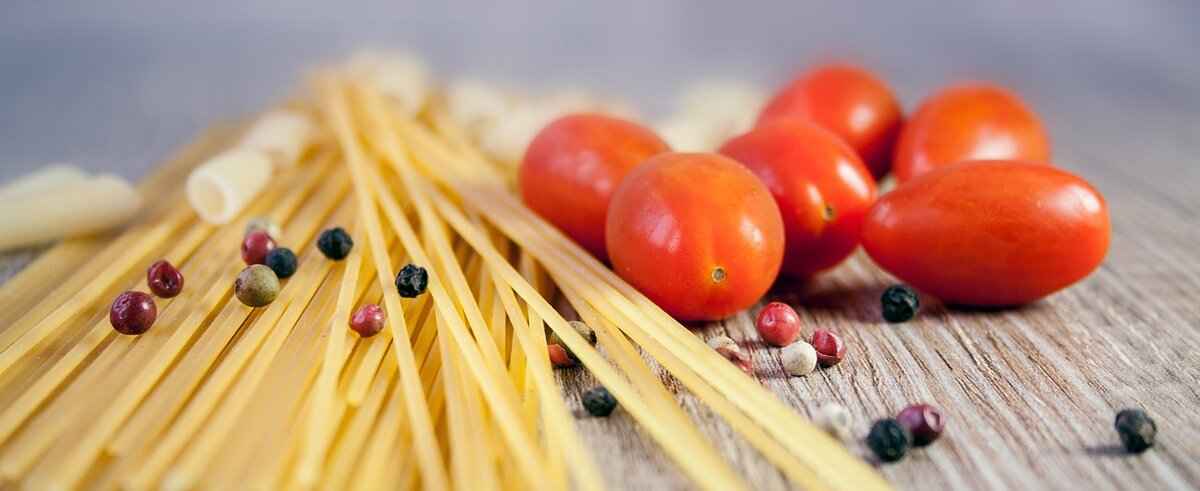Laotian cuisine is a vibrant celebration of flavors, ingredients, and cultural heritage. With its emphasis on fresh herbs, spices, and unique cooking techniques, it offers a culinary experience that is both delightful and diverse. Central to this cuisine is sticky rice, a staple that embodies the essence of Laotian meals. Alongside it, dishes like Larb showcase the country’s rich culinary traditions, while regional specialties highlight the diversity found across Laos.
Sticky rice, known locally as khao niew, is more than just a food item in Laos; it is a cultural symbol. This versatile grain is a fundamental part of daily life, often served during meals and special occasions. The process of preparing sticky rice involves soaking, steaming, and serving it in bamboo baskets, which enhances its unique texture. It fosters a sense of community as families gather to share meals, making it a vital component of Laotian social life.
Larb is a quintessential dish that represents the heart of Laotian cuisine. This vibrant meat salad is celebrated for its unique combination of flavors, including savory, spicy, and tangy notes. Traditionally made with minced meat, herbs, and spices, Larb is often served with sticky rice, making it a complete meal. The use of fresh ingredients like mint, cilantro, and lime juice not only enhances the dish’s flavor but also reflects the agricultural richness of Laos.
Traditional Larb typically includes minced meat, which can be pork, chicken, or beef, along with a medley of herbs and spices. The addition of lime juice and fish sauce creates a fresh and zesty profile that is both unique and satisfying. This dish can also be prepared with tofu for a vegetarian option, showcasing its adaptability.
Across Laos, Larb varies significantly, with each region adding its own twist. For instance, in the northern provinces, Larb may incorporate more herbs and be spicier, while in the south, it might feature different types of meat and a milder flavor. These regional adaptations reflect local tastes, traditions, and available ingredients, making each version of Larb a unique culinary experience.
Creating authentic Larb at home is achievable with quality ingredients and attention to detail. Start by selecting your preferred meat, finely chopping fresh herbs, and balancing the flavors with lime juice and fish sauce. A simple recipe involves:
- 1 lb minced meat
- 1/4 cup fresh mint leaves
- 1/4 cup cilantro
- 2 tablespoons lime juice
- 1 tablespoon fish sauce
- Chili flakes to taste
Combine all ingredients, serve with sticky rice, and enjoy a taste of Laos!
Beyond sticky rice and Larb, Laotian cuisine features an array of dishes that reflect its culinary diversity. Som Tam (papaya salad) is a popular choice, known for its refreshing crunch and spicy kick. Grilled meats, often marinated with local spices, are another staple, showcasing the flavors of Laos.
Street food is an integral part of Laotian culture, providing locals and tourists with quick, delicious meals. Popular options include grilled skewers, noodle soups, and fresh spring rolls. Each dish highlights local ingredients and cooking techniques, making them a delightful experience for food lovers.
When exploring Laotian street food, must-try items include:
- Grilled meat skewers
- Rice noodle soups
- Fresh spring rolls
These dishes not only offer a taste of local flavors but also provide insight into the daily lives of Laotians.
Laotian street food embodies community and tradition. Vendors often share family recipes, fostering a sense of connection and cultural pride among locals. The vibrant atmosphere of street markets also enhances the social experience, making food an essential part of community bonding.
Laos’s diverse geography, from mountainous regions to river valleys, significantly impacts its cuisine. Local resources shape the ingredients and cooking styles found throughout the country, creating a rich tapestry of flavors.
Herbs and spices are essential in Laotian cooking, adding depth and complexity to dishes. Common ingredients like lemongrass, mint, and chili reflect the country’s rich agricultural landscape, enhancing the overall flavor profile.
Seasonality plays a crucial role in Laotian cuisine, with dishes often changing based on what is fresh and available. This practice ensures that meals are not only delicious but also sustainable, promoting the use of local produce and ingredients.
Food in Laos is deeply intertwined with cultural practices, rituals, and celebrations. Meals bring people together, highlighting the importance of food in community bonding and social gatherings.
Laotian families often share meals communally, fostering a sense of togetherness. This tradition emphasizes the role of food as a means of connecting with loved ones, creating cherished memories around the dining table.
Many Laotian festivals showcase traditional foods, reflecting the country’s rich heritage. Celebrations often include special dishes that symbolize prosperity, health, and community spirit, making food a central part of cultural festivities.

What is Sticky Rice and Why is it Important in Laotian Cuisine?
Sticky rice, known locally as khao niew, is more than just a food item in Laos; it is a fundamental aspect of the nation’s culture and culinary identity. This unique variety of rice, characterized by its glutinous texture when cooked, serves as a versatile staple that accompanies a wide range of dishes and plays a pivotal role in social and cultural gatherings.
In Laos, sticky rice is often served at every meal, making it a crucial component of daily life. It is traditionally prepared by soaking the rice overnight and then steaming it in a bamboo basket, which enhances its distinct flavor and texture. The process of cooking sticky rice is not just about nourishment; it is a ritual that brings families together. Sharing a meal of sticky rice signifies unity and community, reinforcing social bonds among family members and friends.
Sticky rice is deeply embedded in Laotian culture, often associated with various rituals and celebrations. For instance, during festivals such as Boun Pi Mai (Lao New Year), sticky rice is a central offering in traditional ceremonies. It symbolizes prosperity and is believed to bring good fortune. Furthermore, it is often used in communal dining settings, where people gather around a shared platter, fostering a sense of togetherness.
Sticky rice is incredibly versatile and pairs well with numerous Laotian dishes. Here are some popular pairings:
- Larb: This iconic meat salad, often made with minced meat, herbs, and spices, is a perfect complement to sticky rice.
- Som Tam: The spicy green papaya salad adds a refreshing contrast to the rich texture of sticky rice.
- Grilled Meats: Various grilled meats, marinated in local spices, are often enjoyed with sticky rice, enhancing the overall flavor experience.
Preparing sticky rice involves a few simple yet essential steps:
1. Rinse the sticky rice thoroughly under cold water.2. Soak the rice in water for at least 6-8 hours, preferably overnight.3. Drain the soaked rice and place it in a bamboo steamer lined with cheesecloth.4. Steam for about 30-45 minutes until the rice is translucent and sticky.5. Serve warm in a woven basket or on a plate, often accompanied by various dishes.
Unlike regular rice, sticky rice has a higher amylopectin content and lower amylose content, which gives it its distinctive sticky texture when cooked. This quality makes it ideal for eating with the hands, a common practice in Laos. The rice can be molded into small balls, allowing it to be easily dipped into sauces or used to scoop up other dishes.
Sticky rice is a good source of carbohydrates, providing energy for daily activities. While it is less nutritious than some other whole grains, it is often paired with protein-rich dishes and fresh vegetables, creating a balanced meal. Additionally, the communal aspect of consuming sticky rice encourages sharing and enjoying food together, which is essential in Laotian culture.
In summary, sticky rice is not only a staple food in Laos but also a symbol of cultural identity and community. Its preparation and consumption reflect the values of togetherness, making it a cherished element of Laotian cuisine.
khao niew,
Laotian Cuisine: Sticky Rice, Larb, and Regional Delights
Explore the rich tapestry of Laotian cuisine, featuring its staple sticky rice, the flavorful dish Larb, and a variety of regional specialties that reflect the country’s diverse culture and traditions.
What is Sticky Rice and Why is it Important in Laotian Cuisine?
Sticky rice, or khao niew, is a culinary cornerstone in Laos, serving as a staple food that shapes daily meals and social gatherings. It symbolizes unity and cultural identity. This unique rice variety is known for its glutinous texture, making it perfect for pairing with various dishes or enjoying on its own.
Understanding Larb: The National Dish of Laos
Larb, a vibrant meat salad, is a quintessential dish in Laos, known for its unique combination of flavors and textures. This dish showcases the country’s culinary heritage and local ingredients, making it a must-try for anyone exploring Laotian cuisine.
What Ingredients Make Up Traditional Larb?
- Minced meat (usually beef, chicken, or pork)
- Fresh herbs (such as mint and cilantro)
- Spices (including chili and toasted rice powder)
- Lime juice for a zesty kick
The balance of these flavors creates a fresh and zesty profile that is both unique and satisfying to the palate.
Variations of Larb Across Different Regions
Larb varies significantly across Laos, with each region adding its own twist. From the use of different meats to varying spice levels, these regional adaptations reflect local tastes and traditions. For instance, northern Laos might use more herbs while southern regions prefer spicier versions.
How to Make Authentic Larb at Home
Creating Larb at home involves selecting quality ingredients and mastering the balance of flavors. Here’s a simple recipe:
Ingredients:- 500g minced meat- 2 tablespoons roasted rice powder- 1/4 cup lime juice- Fresh herbs (mint, cilantro)- Chili to tasteInstructions:1. Cook the minced meat until browned.2. Mix in herbs, lime juice, and roasted rice powder.3. Adjust seasoning with chili and serve with sticky rice.
What Are Other Popular Laotian Dishes?
Beyond Sticky Rice and Larb, Laotian cuisine features an array of dishes, including papaya salad (som tam) and grilled meats, each offering a distinct taste of Laos’s culinary diversity.
Exploring Laotian Street Food Culture
Street food is an integral part of Laotian culture, providing locals and tourists alike with quick, delicious meals. Popular street food options include:
- Grilled skewers
- Noodle soups
- Fresh spring rolls
Each dish highlights local ingredients and cooking techniques, making them a delightful experience for food lovers.
How Does Street Food Reflect Laotian Culture?
Laotian street food is more than just meals; it embodies community and tradition. Vendors often share family recipes, fostering a sense of connection and cultural pride among locals.
How Geography Influences Laotian Cuisine?
Laos’s diverse geography, from mountainous regions to river valleys, significantly impacts its cuisine. Local resources shape the ingredients and cooking styles found throughout the country.
What Role Do Herbs and Spices Play in Laotian Cooking?
Herbs and spices are essential in Laotian cooking, adding depth and complexity to dishes. Common ingredients like lemongrass, mint, and chili reflect the country’s rich agricultural landscape.
How Do Seasonal Ingredients Affect Laotian Dishes?
Seasonality plays a crucial role in Laotian cuisine, with dishes often changing based on what is fresh and available. This practice ensures that meals are not only delicious but also sustainable.
What is the Significance of Food in Laotian Culture?
Food in Laos is deeply intertwined with cultural practices, rituals, and celebrations. Meals bring people together, and traditional dishes are often served during significant events.
How Are Meals Shared in Laotian Families?
Laotian families often share meals communally, fostering a sense of togetherness. This tradition highlights the importance of food as a means of connecting with loved ones.
What Cultural Celebrations Feature Traditional Laotian Cuisine?
Many Laotian festivals showcase traditional foods, reflecting the country’s rich heritage. Celebrations often include special dishes that symbolize prosperity, health, and community spirit.
is a culinary cornerstone in Laos, serving as a staple food that shapes daily meals and social gatherings, symbolizing unity and cultural identity.
Laotian cuisine is a vibrant tapestry of flavors, textures, and traditions, with sticky rice, or khao niew, at its heart. This staple food is not just a dietary necessity; it embodies the cultural identity and social fabric of Laos. As a fundamental part of daily meals and communal gatherings, sticky rice serves as a symbol of unity among families and communities.
Sticky rice is a unique variety of rice that, when cooked, becomes sticky and clumps together. This characteristic allows it to be easily picked up with fingers, making it a perfect accompaniment to various dishes. In Laotian culture, sticky rice is often steamed in bamboo baskets and served alongside meals, reinforcing its significance as a communal food.
Larb is a celebrated dish in Laos, often referred to as the national dish. Known for its vibrant flavors and fresh ingredients, it typically consists of minced meat, herbs, spices, and lime juice. The balance of these elements creates a zesty and refreshing profile that is both satisfying and unique.
- Minced meat (usually chicken, beef, or pork)
- Fresh herbs (such as mint and cilantro)
- Chili flakes for heat
- Lime juice for acidity
This combination not only showcases local ingredients but also reflects the culinary heritage of Laos.
Each region in Laos adds its own twist to larb, with variations in meat choice and spice levels. For instance, in the northern regions, you might find larb made with duck, while southern regions might feature a spicier version with more herbs.
Creating authentic larb at home is straightforward. Start by selecting high-quality minced meat and fresh herbs. Mix the ingredients with lime juice and chili flakes, adjusting to taste. This simple recipe allows anyone to experience the rich flavors of Laos.
Beyond sticky rice and larb, Laotian cuisine boasts an array of dishes such as som tam (papaya salad) and grilled meats. Each dish offers a distinct taste of the country’s culinary diversity, emphasizing fresh ingredients and bold flavors.
Street food is an integral part of Laotian life, offering quick and delicious meals to locals and tourists alike. Popular street food options include grilled skewers, noodle soups, and fresh spring rolls, each highlighting local ingredients and culinary techniques.
- Grilled skewers of marinated meat
- Hearty noodle soups
- Crispy fresh spring rolls
These dishes not only satisfy hunger but also provide a delightful experience for food lovers exploring the streets of Laos.
Laotian street food embodies community and tradition. Vendors often share family recipes, creating a sense of connection and cultural pride among locals. This practice fosters a vibrant food culture that is deeply rooted in the country’s heritage.
The diverse geography of Laos, from mountainous regions to river valleys, significantly impacts its cuisine. Local resources shape the ingredients and cooking styles, leading to a rich variety of flavors and dishes.
Herbs and spices are essential in Laotian cooking, adding depth and complexity to dishes. Ingredients like lemongrass, mint, and chili are staples, reflecting the country’s rich agricultural landscape.
Seasonality is crucial in Laotian cuisine, with dishes often changing based on what is fresh and available. This practice ensures meals are not only delicious but also sustainable, highlighting the importance of local produce.
Food in Laos is deeply intertwined with cultural practices, rituals, and celebrations. Meals bring people together, fostering a sense of community and belonging.
Laotian families often share meals communally, highlighting the importance of food as a means of connecting with loved ones. This tradition strengthens family bonds and reinforces cultural values.
Many Laotian festivals showcase traditional foods, reflecting the country’s rich heritage. Celebrations often include special dishes that symbolize prosperity, health, and community spirit, making food an essential part of cultural festivities.
Understanding Larb: The National Dish of Laos
Laos, a country rich in culture and tradition, boasts a culinary landscape that reflects its vibrant heritage. Among its most celebrated dishes is Larb, a meat salad that encapsulates the essence of Laotian cuisine. This dish is not only a staple in local households but also a symbol of community and celebration, making it an essential part of the Laotian dining experience.
Larb stands out due to its unique combination of flavors and textures. The dish typically features minced meat—often beef, chicken, or pork—combined with fresh herbs, spices, and a zesty dressing made from lime juice and fish sauce. This harmonious blend creates a refreshing and vibrant taste that is both satisfying and invigorating. The use of ingredients such as mint, coriander, and chili not only enhances the flavor but also adds a burst of color, making it visually appealing.
- Minced Meat: The base of Larb, typically made from pork, chicken, or beef.
- Fresh Herbs: Ingredients like mint and cilantro are essential for flavor.
- Spices: A blend of spices, including roasted rice powder, adds depth.
- Lime Juice: Provides a tangy kick that brightens the dish.
- Fish Sauce: A key ingredient that adds umami and saltiness.
Preparing Larb is a straightforward process. The meat is typically cooked and then combined with the herbs and spices in a large bowl. The dressing, made from lime juice and fish sauce, is poured over the mixture, and everything is tossed together until well combined. It’s often served with a side of sticky rice and fresh vegetables, allowing diners to create their own wraps. This communal style of eating encourages sharing and enhances the social aspect of the meal.
The beauty of Larb lies in its adaptability. Different regions of Laos have their own variations, showcasing local ingredients and culinary traditions. For instance, in the northern provinces, Larb may be made with game meats, while in the south, seafood can be a popular choice. Additionally, the spice level can vary significantly, with some regions preferring a milder flavor while others embrace a more fiery profile.
Larb is often regarded as the national dish of Laos not only for its widespread popularity but also for its cultural significance. It is commonly served during special occasions, family gatherings, and celebrations, symbolizing unity and togetherness. The dish embodies the spirit of Laotian hospitality, where sharing a meal is a cherished tradition that strengthens community bonds.
Creating an authentic Larb at home is an enjoyable culinary adventure. Begin by selecting high-quality minced meat and fresh herbs. Follow a simple recipe that balances the ingredients to achieve the perfect flavor profile. Experimenting with different meats and spices can also lead to delightful variations, allowing you to personalize this beloved dish.
In conclusion, Larb is more than just a dish; it is a representation of Laotian culture and identity. Its vibrant flavors, communal preparation, and regional variations make it a cornerstone of Laotian cuisine that continues to bring people together, both in Laos and around the world.
What Ingredients Make Up Traditional Larb?
Laotian cuisine is renowned for its vibrant flavors and fresh ingredients, and at the heart of this culinary tradition lies Larb, a dish that embodies the essence of Laos. Understanding the ingredients that make up traditional Larb is crucial for anyone looking to appreciate or recreate this iconic dish.
Traditional Larb is a delightful combination of minced meat, herbs, spices, and lime juice. These components come together to create a dish that is not only fresh and zesty but also rich in flavor and texture. Each ingredient plays a vital role in crafting the distinctive taste that Larb is celebrated for.
- Minced Meat: The foundation of Larb typically consists of minced meat, which can vary based on regional preferences. Common choices include beef, chicken, pork, or even fish. The choice of meat significantly influences the overall flavor profile of the dish.
- Herbs: Fresh herbs are essential in Larb, providing an aromatic quality that elevates the dish. Key herbs include mint, cilantro, and Thai basil. These herbs not only add flavor but also contribute to the dish’s vibrant appearance.
- Spices: A blend of spices is crucial for achieving the characteristic taste of Larb. Common spices include chili flakes, ground rice (which adds texture), and fish sauce for umami. The balance of these spices is what makes each Larb recipe unique.
- Lime Juice: Freshly squeezed lime juice is a key ingredient that adds a tangy brightness to Larb. It enhances the flavors of the meat and herbs, creating a refreshing taste that is both satisfying and invigorating.
The balance of these ingredients is what creates the fresh and zesty profile that is both unique and satisfying to the palate. The interplay of savory meat, aromatic herbs, and tangy lime juice results in a dish that is not only delicious but also representative of Laotian culinary traditions.
Traditionally, Larb is served with a side of sticky rice, which complements the dish perfectly. The sticky texture of the rice allows it to be easily molded into small balls, making it an ideal accompaniment for scooping up the flavorful meat salad. Additionally, Larb is often garnished with extra herbs and served alongside fresh vegetables, such as cucumbers and lettuce, which provide a refreshing crunch.
The unique combination of flavors and textures in Larb makes it a standout dish in Laotian cuisine. The freshness of the herbs, the richness of the meat, and the zing from the lime juice create a symphony of taste that is both invigorating and satisfying. Each bite offers a burst of flavor that is deeply rooted in Laotian culture, making Larb not just a meal, but a celebration of the country’s culinary heritage.

Variations of Larb Across Different Regions
Laos is a country rich in culinary diversity, and one of its most celebrated dishes is Larb. This vibrant meat salad is not only a national dish but also a reflection of the country’s regional flavors and traditions. Each area of Laos brings its own unique twist to Larb, showcasing the local ingredients and culinary practices that define their culture.
The beauty of Larb lies in its adaptability. While the core ingredients often remain the same, such as minced meat, herbs, and spices, the variations in preparation and flavor profiles are what set each region apart. These adaptations highlight the local tastes, available ingredients, and cultural influences that shape Laotian cuisine.
- Vientiane Style: In the capital city, Larb is often prepared with minced chicken or pork, and it tends to be milder in spice. The addition of fresh herbs like mint and cilantro enhances its freshness, making it a popular choice among locals and tourists alike.
- Luang Prabang Style: This region is known for its more robust flavors. Larb here frequently incorporates beef or duck, and the use of toasted rice powder adds a delightful crunch. The spice levels are generally higher, appealing to those who enjoy a bit of heat in their meals.
- Southern Laos Style: In the southern provinces, Larb often features fish or even frog, reflecting the region’s abundant water resources. The incorporation of local herbs and a generous squeeze of lime juice gives this version a distinct tangy flavor.
- Northern Laos Style: The northern variation is characterized by its use of wild game, such as deer or boar. This Larb is usually spicier and may include more aromatic herbs, showcasing the natural bounty of the mountainous regions.
The choice of meat is crucial in determining the flavor profile of Larb. For instance, using pork results in a richer taste, while chicken provides a lighter option. Additionally, the availability of fresh herbs and spices such as lemongrass, galangal, and chili can significantly alter the dish’s overall character.
Each region’s approach to Larb is deeply rooted in tradition. Families often pass down recipes through generations, with each cook adding their personal touch. This practice not only preserves culinary heritage but also fosters a sense of community as people gather to share meals and celebrate their culture.
For those wishing to explore the diverse flavors of Larb, visiting local markets and street food stalls is highly recommended. Here, you can find authentic preparations that reflect the region’s culinary identity. Additionally, participating in cooking classes can provide insights into the techniques and ingredients that make each version unique.
In conclusion, the variations of Larb across Laos are a testament to the country’s rich culinary landscape. Each region’s unique twist on this beloved dish not only satisfies the palate but also tells a story of local traditions, ingredients, and flavors. Whether you prefer the milder Vientiane style or the spicier northern version, exploring these regional adaptations is a delightful journey into the heart of Laotian cuisine.
How to Make Authentic Larb at Home
Creating Larb at home is a rewarding culinary experience that allows you to explore the vibrant flavors of Laotian cuisine. This dish, renowned for its fresh ingredients and zesty profile, can be easily prepared with a few quality components. Below, we will delve into a simple yet authentic recipe that captures the essence of Larb, along with tips for achieving the perfect balance of flavors.
To make a traditional Larb, you will need the following ingredients:
- Minced Meat: Choose your favorite protein, such as chicken, beef, or pork.
- Fresh Herbs: Mint and cilantro are essential for that fresh flavor.
- Spices: Use roasted rice powder for texture and a unique taste.
- Seasoning: Lime juice, fish sauce, and chili flakes are key for the zesty kick.
- Vegetables: Sliced shallots and green onions add crunch and flavor.
Follow these steps to create a delicious Larb:
1. Begin by cooking your minced meat in a skillet over medium heat until fully cooked.2. Once cooked, transfer the meat to a mixing bowl and let it cool slightly.3. Add chopped mint, cilantro, sliced shallots, and green onions to the bowl.4. In a separate small bowl, mix together lime juice, fish sauce, and chili flakes.5. Pour the dressing over the meat and herb mixture, then sprinkle in roasted rice powder.6. Gently toss everything together until well combined. Adjust seasoning to taste.7. Serve your Larb warm or at room temperature, accompanied by sticky rice and fresh vegetables.
To elevate your Larb, consider the following tips:
- Quality Ingredients: Always use fresh herbs and high-quality meat for the best flavor.
- Balancing Flavors: Taste as you go, adjusting lime juice and fish sauce to achieve the right balance of acidity and saltiness.
- Experiment with Variations: Try different proteins or add ingredients like toasted peanuts for added texture.
Larb is typically served with sticky rice, which complements its flavors beautifully. You can also pair it with fresh vegetables like lettuce or cucumber for a refreshing crunch. For those who enjoy a bit of heat, serve with extra chili flakes on the side.
Making Larb at home not only gives you control over the ingredients but also allows you to customize the flavors to your liking. It’s a fantastic way to bring a taste of Laos into your kitchen and share this vibrant dish with family and friends. Whether you’re hosting a dinner party or simply enjoying a meal at home, Larb is sure to impress with its bold flavors and fresh ingredients.
What Are Other Popular Laotian Dishes?
Laotian cuisine is a vibrant tapestry of flavors, textures, and aromas that reflect the country’s rich cultural heritage. While sticky rice and larb are often the stars of the culinary scene, there is a plethora of other dishes that deserve attention. This article delves into some of the most popular Laotian dishes, showcasing the diversity and uniqueness of this Southeast Asian cuisine.
- Som Tam (Papaya Salad): A refreshing salad made from shredded green papaya, tomatoes, green beans, and peanuts, all tossed in a zesty dressing of lime juice, fish sauce, and chili. This dish is a staple in Laotian cuisine and is known for its balance of sweet, sour, and spicy flavors.
- Grilled Meats: Laotians are known for their love of grilled meats, particularly ping or skewered meats served with a side of spicy dipping sauce. Common choices include chicken, pork, and beef, marinated in a blend of herbs and spices before being grilled to perfection.
- Laab (Larb): Beyond the traditional minced meat version, laab can also be made with fish or mushrooms, offering a vegetarian option. Each variation highlights the freshness of local ingredients and the unique flavor profiles of different regions.
- Khao Soi: A delicious noodle soup that combines egg noodles with a rich, aromatic broth made from coconut milk and various spices. Often garnished with crispy noodles and fresh herbs, this dish is a favorite among locals and visitors alike.
- Tam Mak Hoong: Another variation of papaya salad, this dish incorporates fermented fish sauce for an added depth of flavor. It is often served as a side dish and pairs well with grilled meats.
The use of fresh, local ingredients is a hallmark of Laotian cuisine. Herbs like mint, cilantro, and lemongrass are frequently used to enhance flavors. The geographical diversity of Laos, from mountainous regions to lush river valleys, allows for a wide range of produce, including herbs, vegetables, and fruits that contribute to the distinctiveness of each dish.
Spices are integral to Laotian cooking, providing both heat and flavor. Commonly used spices include chili, ginger, and galangal. These ingredients not only add complexity to dishes but also reflect the agricultural practices of the region, where many spices are grown locally.
Laotian cuisine is influenced by its neighbors, including Thailand, Vietnam, and China. For instance, the use of rice noodles in soups and salads can be traced back to Vietnamese culinary practices. However, Laotian dishes maintain their unique identity through the use of local ingredients and traditional cooking methods.
- Grilled Sticky Rice: A popular street food, often served with various grilled meats or as a snack on its own.
- Spring Rolls: Fresh spring rolls filled with vegetables and herbs, often served with a sweet and spicy dipping sauce.
- Noodle Soups: A variety of noodle soups are available, each with its own unique broth and toppings, showcasing the diversity of Laotian flavors.
In conclusion, Laotian cuisine is a celebration of flavors and traditions, with a rich array of dishes beyond just sticky rice and larb. From the tangy som tam to the savory grilled meats, each dish tells a story of the land and its people, making it a culinary adventure worth exploring.
Exploring Laotian Street Food Culture
Laos, a hidden gem in Southeast Asia, is renowned for its vibrant street food culture that captivates both locals and tourists. Street food in Laos is not just about quick bites; it represents a rich tradition that has been passed down through generations. This culinary experience offers a glimpse into the heart of Laotian life, where food serves as a bridge connecting communities and cultures.
Laotian street food stands out due to its emphasis on fresh, locally sourced ingredients and bold flavors. Vendors often prepare dishes right in front of customers, allowing for a sensory feast of sights and smells. The use of herbs, spices, and local produce elevates the taste of even the simplest meals, making them memorable. The diversity of flavors reflects the country’s varied geography and cultural influences.
- Grilled Skewers: These are a staple on every street corner, featuring marinated meats like chicken, pork, or beef, grilled to perfection and served with a spicy dipping sauce.
- Noodle Soups: A comforting bowl of noodle soup, often made with rice noodles and flavored with aromatic herbs, is a must-try for anyone visiting Laos.
- Fresh Spring Rolls: These delightful rolls are filled with fresh vegetables and herbs, often accompanied by a tangy dipping sauce that enhances their flavor.
- Papaya Salad (Som Tam): A popular dish that combines shredded green papaya, tomatoes, peanuts, and a spicy dressing, offering a refreshing taste.
Street food in Laos is more than just a meal; it embodies the spirit of community and cultural pride. Vendors often share family recipes, creating a sense of belonging and continuity. Eating street food is a social activity, with friends and families gathering around stalls to enjoy meals together. This communal aspect fosters connections among people, reinforcing the importance of food in Laotian culture.
Street food vendors are vital to the local economy and culture. They not only provide affordable meals but also create jobs and support local agriculture by sourcing ingredients from nearby farmers. Many vendors have established their businesses over decades, becoming integral parts of their neighborhoods. Their stalls often serve as gathering spots where people from all walks of life come together, making them hubs of social interaction.
To truly immerse yourself in Laotian street food culture, consider exploring night markets, which come alive with vibrant stalls offering a variety of dishes. Engaging with vendors, asking about their recipes, and trying new foods can enhance your experience. Additionally, taking a street food tour can provide insights into the history and significance of each dish, making your culinary journey even more enriching.
For many Laotians, street food is an essential part of daily life. It provides quick, affordable meals for busy individuals and families. The accessibility of street food allows people to enjoy delicious, home-cooked flavors without the need for elaborate preparations. Furthermore, it plays a significant role in festivals and celebrations, where special dishes are prepared to honor traditions and bring people together.
What Street Foods Should You Try in Laos?
Laos is a treasure trove of flavors, and its street food scene is a vibrant reflection of the country’s rich culinary heritage. From bustling markets to roadside stalls, Laotian street food offers an array of dishes that are not only delicious but also deeply rooted in tradition. In this section, we will explore some of the must-try street foods that every visitor should experience while in Laos.
One of the most popular street foods in Laos is grilled skewers, known locally as “sai oua.” These skewers are typically made from marinated meats, such as chicken, pork, or beef, and are grilled to perfection over an open flame. The marinades often include a mix of local herbs and spices, giving each skewer a unique flavor profile. Enjoying these skewers with a side of spicy dipping sauce makes for a delightful culinary experience.
Noodle soups are another staple of Laotian street food culture, with variations found throughout the country. One popular version is “khao soi,” a rich and aromatic soup made with rice noodles, meat, and an array of fresh herbs. The combination of flavors—spicy, sour, and savory—creates a comforting dish that warms the soul. Street vendors often serve these soups with additional toppings, such as bean sprouts and lime, allowing diners to customize their meal.
Fresh spring rolls, or “nem,” are a light and refreshing option that showcases the use of fresh ingredients. These rolls are typically filled with a variety of vegetables, herbs, and sometimes meat or shrimp, all wrapped in rice paper. They are often served with a tangy dipping sauce, making them a perfect snack for those looking to enjoy a healthy bite while exploring the streets of Laos.
Street food in Laos is not just about the food; it reflects the country’s cultural identity and community spirit. Vendors often share family recipes passed down through generations, fostering a sense of connection among locals. Eating street food is a communal experience, where people gather to enjoy meals together, share stories, and celebrate their culture.
Each street food dish highlights the use of local ingredients that are fresh and readily available. For instance, herbs like mint, cilantro, and lemongrass are commonly used, adding depth and flavor to each dish. This emphasis on local produce not only supports local farmers but also ensures that the food is both sustainable and delicious.
To truly experience Laotian street food, visit bustling night markets or food stalls in cities like Vientiane and Luang Prabang. These locations are known for their vibrant atmosphere and variety of food options, allowing visitors to sample multiple dishes in one evening. Don’t hesitate to ask locals for their recommendations; they often know the best spots for authentic street food.
In conclusion, Laotian street food offers a unique culinary adventure that captures the essence of the country’s culture and traditions. From grilled skewers to fresh spring rolls, each dish tells a story, inviting food lovers to explore and savor the rich flavors of Laos.

How Does Street Food Reflect Laotian Culture?
Laotian street food is a vibrant expression of the country’s culture, offering more than just quick bites; it serves as a window into the heart of Laotian society. Street food vendors, often family-run, provide a unique opportunity for locals and visitors to experience the flavors and traditions that define Laos.
Street food in Laos is deeply rooted in community and tradition. Vendors frequently share family recipes that have been passed down through generations, creating a strong bond between the food and the people. This practice not only preserves culinary heritage but also fosters a sense of cultural pride among locals. When you enjoy a meal from a street vendor, you are partaking in a shared experience that transcends individual tastes and connects you to the larger community.
- Grilled Skewers: These are often marinated in a blend of local spices and grilled to perfection. They represent the communal aspect of dining, as they are typically enjoyed in groups.
- Noodle Soups: Rich and aromatic, these soups are a staple in Laotian street food culture. They reflect the diversity of ingredients available in different regions.
- Fresh Spring Rolls: Filled with vegetables and herbs, these rolls highlight the importance of freshness in Laotian cuisine.
For many Laotians, street food is a daily necessity. It provides affordable and delicious meals that fit into busy lifestyles. Vendors set up shop in bustling markets and street corners, creating an atmosphere of vibrancy and energy. This accessibility makes street food a vital part of urban life, where people can gather, socialize, and enjoy a meal together.
Laotian festivals often feature traditional street foods that are significant to cultural celebrations. During events like the Buddhist New Year, vendors set up stalls offering special dishes that symbolize prosperity and community spirit. This not only enhances the festive atmosphere but also reinforces the role of food in bringing people together during important cultural moments.
As tourism in Laos grows, street food has become a bridge for cultural exchange. Visitors are drawn to the unique flavors and cooking methods, creating a dialogue between locals and tourists. This interaction allows for the sharing of stories and traditions, enriching the experience for everyone involved. Street food thus becomes not just a meal, but a means of cultural connection and understanding.
In conclusion, Laotian street food is a vibrant tapestry of flavors, traditions, and community. It reflects the essence of Laotian culture, where every dish tells a story and every meal is an opportunity to connect. Whether you are enjoying a simple bowl of noodle soup or a plate of grilled skewers, you are partaking in a rich cultural experience that embodies the spirit of Laos.
How Geography Influences Laotian Cuisine?
Laos, a landlocked country in Southeast Asia, is characterized by its diverse geography, which ranges from rugged mountains to fertile river valleys. This unique landscape plays a crucial role in shaping the nation’s culinary traditions. The availability of various local resources directly influences the ingredients used in Laotian dishes and the cooking methods employed throughout the country.
The geographical diversity of Laos allows for a wide range of ingredients to flourish. In the mountainous regions, you will find an abundance of wild herbs, mushrooms, and game meats, while the river valleys provide a rich supply of fish and freshwater ingredients. This abundance leads to a culinary landscape that is both varied and rich in flavors.
- Mountainous Regions: These areas are known for their unique herbs such as wild mint and lemongrass, which are often used in traditional dishes.
- River Valleys: Freshwater fish, such as tilapia and catfish, are staples in many meals, showcasing the importance of rivers in Laotian cuisine.
- Plains and Plateaus: These regions support the growth of staple crops like sticky rice, which is a central element in most Laotian diets.
Local cooking styles in Laos are deeply influenced by geography. For instance, in the mountainous regions, cooking often involves grilling and smoking meats, which are practical methods given the available resources. Conversely, in river valleys, dishes tend to focus on steaming and boiling, allowing for the natural flavors of fish and vegetables to shine through.
Seasons in Laos also dictate the types of ingredients available, further impacting culinary practices. The rainy season brings an abundance of fresh produce, while the dry season is ideal for harvesting grains and preserving food. This seasonality ensures that Laotian cuisine remains dynamic and reflective of the environment.
- Rainy Season: Fresh vegetables and herbs are plentiful, leading to dishes that emphasize vibrant flavors.
- Dry Season: Ingredients like dried fish and preserved meats become more common, showcasing traditional preservation methods.
Traditional cooking methods in Laos are often adapted to suit the local environment. For example, the use of bamboo for cooking and serving food is prevalent in rural areas, where bamboo is abundant. This practice not only enhances the flavor of dishes but also reflects the sustainable use of local resources.
Several signature Laotian dishes encapsulate the geographical influences on cuisine. Larb, for instance, varies from region to region, with mountain communities often using game meats, while river dwellers might incorporate fish. Additionally, the famous papaya salad showcases the use of locally sourced ingredients, such as green papaya and fresh herbs, reflecting the agricultural richness of the land.
In summary, the interplay between Laos’s geography and its culinary practices is a testament to the country’s rich cultural heritage. By understanding how local resources shape ingredients and cooking styles, one can truly appreciate the depth and diversity of Laotian cuisine.
What Role Do Herbs and Spices Play in Laotian Cooking?
Laotian cuisine is a vibrant tapestry woven from the country’s rich agricultural landscape, where herbs and spices play a pivotal role in shaping the flavors and aromas of traditional dishes. The use of fresh ingredients not only enhances the taste but also reflects the cultural identity of Laos.
In Laotian cooking, herbs and spices are not merely supplementary; they are the very essence of the dishes. Ingredients such as lemongrass, mint, and chili are commonly used, each contributing unique flavors that define the cuisine. These ingredients are often sourced from local farms, ensuring freshness and quality. The emphasis on using fresh herbs and spices not only boosts the nutritional value of meals but also enhances the overall dining experience.
- Lemongrass: This fragrant herb is a staple in many Laotian dishes, adding a citrusy note that brightens flavors.
- Mint: Often used in salads and as a garnish, mint provides a refreshing contrast to spicy dishes.
- Chili: Whether fresh, dried, or powdered, chili peppers add heat and depth, making them indispensable in many recipes.
- Galangal: Similar to ginger, galangal offers a distinctive flavor that is particularly prominent in soups and curries.
- Basil: Varieties like Thai basil are used in various dishes, imparting a sweet and slightly peppery taste.
The combination of herbs and spices in Laotian dishes creates a complex flavor profile that is both aromatic and flavorful. For instance, in the popular dish Larb, the interplay of mint, lime, and chili creates a zesty and refreshing salad that is both satisfying and invigorating. The balance of flavors is crucial, as it reflects the harmony that is central to Laotian culture.
Laos’s diverse geography allows for a wide variety of herbs and spices to thrive. The mountainous regions and fertile river valleys provide an ideal environment for cultivating fresh ingredients. This abundance is celebrated in Laotian cuisine, where meals often feature local produce that varies by season. The use of seasonal herbs and spices not only supports local farmers but also ensures that dishes are made with the freshest ingredients available.
In addition to their flavor-enhancing properties, many herbs and spices used in Laotian cooking offer numerous health benefits. For example, lemongrass is known for its anti-inflammatory and antioxidant properties, while mint can aid digestion. Incorporating these ingredients into meals not only enriches the flavor but also promotes overall well-being, making Laotian cuisine a wholesome choice.
Traditional Laotian cooking methods, such as grilling and steaming, preserve the natural flavors of herbs and spices. These techniques allow the essential oils and aromas to infuse the dishes, creating a rich sensory experience. For instance, grilled meats marinated with chili and lemongrass showcase the vibrant flavors that define Laotian cuisine. The respect for traditional cooking methods ensures that the cultural significance of each dish is maintained.
In summary, herbs and spices are fundamental to Laotian cooking, adding depth and complexity that reflects the country’s agricultural richness and cultural heritage. Their integration into daily meals not only enhances flavor but also fosters a connection to the land and traditions of Laos.

How Do Seasonal Ingredients Affect Laotian Dishes?
Laotian cuisine is a vibrant tapestry woven from the threads of its geography, culture, and, most importantly, its seasons. One of the defining characteristics of this culinary landscape is the use of seasonal ingredients, which significantly influences the flavors and availability of dishes throughout the year. Understanding how seasonality affects Laotian dishes provides a deeper appreciation for the country’s rich culinary heritage.
In Laos, the concept of freshness is paramount. Seasonal ingredients not only enhance the taste of dishes but also reflect the natural cycles of the environment. Laotians take pride in using what is locally available, ensuring that their meals are not only delicious but also sustainable. This commitment to freshness means that certain dishes may only be enjoyed during specific times of the year, creating a unique culinary calendar.
- Fruits: Seasonal fruits such as mangoes, papayas, and lychees are often incorporated into salads and desserts.
- Vegetables: Fresh greens, herbs, and root vegetables are staples in many dishes, changing with the seasons.
- Meats: Local meats, including fish from rivers and poultry, are often sourced based on seasonal availability.
Many traditional Laotian dishes are crafted around seasonal ingredients. For instance, som tam, a popular papaya salad, is best enjoyed with fresh, crunchy green papayas available in the warm months. Similarly, dishes like larb may vary in flavor and ingredients based on what meats and herbs are in season. This adaptability not only keeps the cuisine exciting but also encourages a deeper connection to the land and its offerings.
Yes, various festivals in Laos celebrate the harvest and the seasonal bounty. Events like the Boun Pi Mai (Lao New Year) often feature dishes made from newly harvested rice and fresh vegetables, symbolizing renewal and gratitude for the land’s gifts. These celebrations highlight the importance of community and the shared joy of food, further emphasizing how seasonality is intertwined with cultural practices.
The changing seasons also influence cooking techniques in Laos. For example, during the rainy season, when certain herbs and vegetables thrive, traditional methods such as grilling and steaming become more prevalent. Conversely, the dry season may see an increase in the use of preserved ingredients, as families prepare for times when fresh produce is less available. This adaptability showcases the ingenuity of Laotian cooks and their ability to create flavorful meals regardless of the season.
By focusing on seasonal ingredients, Laotian cuisine promotes sustainability. This practice minimizes the carbon footprint associated with transporting out-of-season produce and supports local farmers and markets. Furthermore, it encourages biodiversity, as diverse crops are planted and harvested throughout the year, enriching the soil and the ecosystem. Eating seasonally not only benefits the environment but also fosters a sense of community and connection among those who share the bounty of the land.
In summary, seasonality is a vital aspect of Laotian cuisine that influences everything from ingredient selection to cooking techniques and cultural celebrations. By embracing seasonal ingredients, Laotians create dishes that are not only flavorful and fresh but also deeply rooted in their cultural identity and environmental stewardship.
What is the Significance of Food in Laotian Culture?
Food in Laos is not merely sustenance; it is an essential aspect of cultural identity, social interaction, and community bonding. The significance of food transcends the act of eating, intertwining with various cultural practices, rituals, and celebrations that define Laotian life. This exploration delves into how meals foster connections among people and the pivotal role food plays in strengthening community ties.
In Laos, sharing a meal is a profound act that goes beyond nourishment. Communal dining is a cherished tradition, where families and friends gather around a table to enjoy a variety of dishes. This practice reinforces social bonds and fosters a sense of belonging. Families often prepare meals together, instilling values of cooperation and unity among members.
Laotian culture is rich with festivals and rituals that prominently feature food. For instance, during the Lao New Year, or Boun Pi Mai, special dishes are prepared to symbolize prosperity and good fortune. Sticky rice plays a central role in these celebrations, as it is not only a staple food but also a symbol of unity and shared heritage.
Each traditional dish in Laos carries its own story and significance. For example, Larb, often referred to as the national dish, is more than just a meal; it represents the essence of Laotian hospitality. When served, it signifies the host’s respect and care for their guests, highlighting the importance of relationships in Laotian culture.
The way food is prepared and consumed in Laos reflects the values of the society. Fresh, local ingredients are preferred, showcasing the community’s connection to the land. Meals are often accompanied by rituals, such as offering food to spirits or ancestors, emphasizing the respect for both the living and the deceased. This practice reinforces the belief that food is a bridge between the physical and spiritual worlds.
Food in Laos serves as a medium for passing down traditions and stories across generations. Elders teach younger family members how to prepare traditional dishes, ensuring that culinary skills and cultural knowledge are preserved. This intergenerational exchange strengthens familial bonds and instills a sense of pride in cultural heritage.
Food also plays a crucial role in building and maintaining social networks within communities. Community events often revolve around shared meals, where people come together to celebrate milestones, such as weddings, births, and religious ceremonies. These gatherings foster camaraderie and reinforce communal ties, making food a vital component of Laotian social life.
In summary, food in Laos is a multifaceted element that embodies cultural identity, social interaction, and community cohesion. From daily meals to festive celebrations, the act of sharing food fosters connections among individuals and strengthens the fabric of Laotian society. Understanding the significance of food in Laotian culture provides valuable insights into the traditions and values that shape this beautiful country.
How Are Meals Shared in Laotian Families?
In Laos, the act of sharing meals is a cherished tradition that transcends mere sustenance. It is a profound expression of love, unity, and community among Laotian families. The communal dining experience is not just about eating together; it is a ritual that strengthens familial bonds and fosters a deep sense of belonging.
Laotian families often gather around a table laden with an array of dishes, where the centerpiece is typically sticky rice. This staple food is not only a source of nourishment but also a symbol of togetherness. Each family member partakes in the meal, using their hands to scoop rice and share various dishes, which promotes a sense of equality and togetherness.
Food in Laos serves as a bridge that connects generations. Elders pass down recipes and cooking techniques, ensuring that traditional dishes are preserved and appreciated. During meals, stories are shared, laughter resonates, and a sense of cultural identity is reinforced. This practice of sharing meals emphasizes the importance of nurturing relationships and maintaining cultural heritage.
- Sticky Rice: A must-have at every meal, it is often served in a bamboo basket.
- Larb: This iconic dish, made with minced meat and fresh herbs, is a staple at family gatherings.
- Som Tam: A spicy papaya salad that adds a refreshing kick to the meal.
- Grilled Meats: Various marinated meats grilled to perfection are commonly enjoyed.
Sharing meals is a ritual that reinforces family ties. It is a time when family members can discuss their daily lives, share accomplishments, and provide emotional support. This practice fosters a sense of security and belonging, particularly for children, who learn the values of community and cooperation from an early age.
In Laotian culture, food is integral to celebrations and special occasions. Festivals and family gatherings feature traditional dishes that hold significant meaning. For instance, during the Boun Pi Mai (Lao New Year), families prepare elaborate meals that symbolize prosperity and good fortune. These celebrations are not only a feast for the palate but also a time for families to come together and honor their cultural roots.
The act of sharing meals embodies the Laotian values of hospitality and generosity. It is common for families to invite neighbors or friends to join their meals, further extending the sense of community. This openness fosters relationships beyond immediate family and strengthens social ties within the community.
In summary, sharing meals in Laotian families is a deeply rooted tradition that goes beyond the act of eating. It is a vital aspect of their culture that reinforces connections, preserves heritage, and fosters a sense of belonging. As families gather around the table, they not only nourish their bodies but also their hearts, creating lasting memories and bonds that endure through generations.

What Cultural Celebrations Feature Traditional Laotian Cuisine?
Laos is a country rich in culture and tradition, and its festivals are a vibrant reflection of this heritage. One of the most significant aspects of these celebrations is traditional Laotian cuisine, which plays an essential role in bringing communities together. Various festivals throughout the year highlight special dishes that symbolize prosperity, health, and the spirit of unity among the people.
- Boun Pi Mai (Lao New Year): This is the most important festival in Laos, celebrated in mid-April. Families prepare traditional dishes such as sticky rice and larb to share with loved ones, symbolizing renewal and prosperity for the new year.
- Boun Bang Fai (Rocket Festival): Held in May, this festival features the making and launching of homemade rockets. Traditional foods like grilled meats and papaya salad are enjoyed during the festivities, highlighting the connection between food and celebration.
- Boun Khao Pad (Rice Festival): Celebrated in October, this festival honors the rice harvest. Communities come together to prepare and share various rice-based dishes, showcasing the importance of rice in Laotian culture.
Traditional foods served during these festivals are not just meals; they are a celebration of identity. Each dish carries historical significance and reflects the local culture and agricultural practices. For instance, larb, made with minced meat and fresh herbs, is often prepared for special occasions, symbolizing the importance of fresh ingredients and communal cooking.
Food is a central element in Laotian festivals, fostering a sense of community and belonging. During celebrations, families and friends gather to prepare and share meals, strengthening their bonds. This communal aspect of dining is vital in Laotian culture, where meals are often served in a shared style, allowing everyone to partake in the experience.
Several dishes are synonymous with Laotian festivals:
- Sticky Rice: A staple in Laotian cuisine, sticky rice is often served at every festival. It is not only a food source but also a symbol of unity among families.
- Larb: This national dish is frequently prepared during celebrations, showcasing the vibrant flavors of Laos.
- Som Tam: This spicy papaya salad is a popular dish at many festivals, representing the balance of flavors that Laotian cuisine is known for.
Festivals in Laos serve as a platform for preserving and promoting culinary traditions. Elders often pass down recipes and cooking techniques to younger generations during these gatherings, ensuring that the rich food heritage of Laos continues to thrive. This transmission of knowledge fosters a deep appreciation for traditional cooking methods and ingredients.
While globalization has introduced new flavors and dining experiences to Laos, many communities strive to maintain their traditional culinary practices during festivals. The emphasis on local ingredients and time-honored recipes helps preserve the authenticity of Laotian cuisine, even as modern influences emerge.
In conclusion, traditional Laotian cuisine plays a pivotal role in cultural celebrations, reflecting the rich heritage of the country. Through shared meals and special dishes, festivals foster community spirit and preserve culinary traditions, ensuring that the flavors of Laos continue to be celebrated for generations to come.
Frequently Asked Questions
- What is the main staple food in Laotian cuisine?
The main staple food in Laotian cuisine is sticky rice, known locally as khao niew. It’s not just a meal; it’s a symbol of unity and cultural identity in Laos, often served at family gatherings and celebrations.
- What is Larb and why is it significant?
Larb is considered the national dish of Laos, a vibrant meat salad that combines minced meat with fresh herbs, spices, and lime juice. Its unique flavors and textures showcase the rich culinary heritage of the country.
- How does street food reflect Laotian culture?
Laotian street food is more than just quick bites; it embodies community spirit and tradition. Vendors often share family recipes, creating a sense of connection and cultural pride among locals while offering delicious meals to everyone.
- What are some popular street foods to try in Laos?
When in Laos, don’t miss out on must-try street foods like grilled skewers, savory noodle soups, and fresh spring rolls. Each dish highlights local ingredients and cooking techniques, making your culinary adventure truly delightful!
- How do seasonal ingredients influence Laotian dishes?
Seasonality plays a key role in Laotian cuisine. Dishes often change based on what’s fresh and available, ensuring meals are not only delicious but also sustainable, reflecting the natural bounty of the land.














